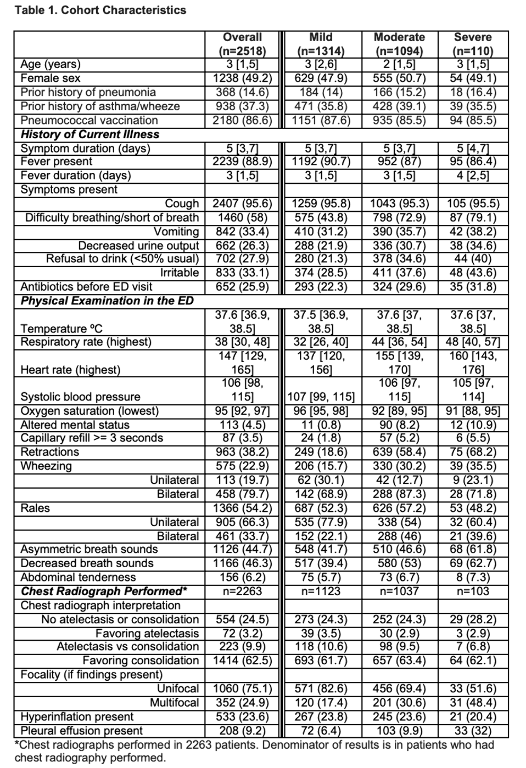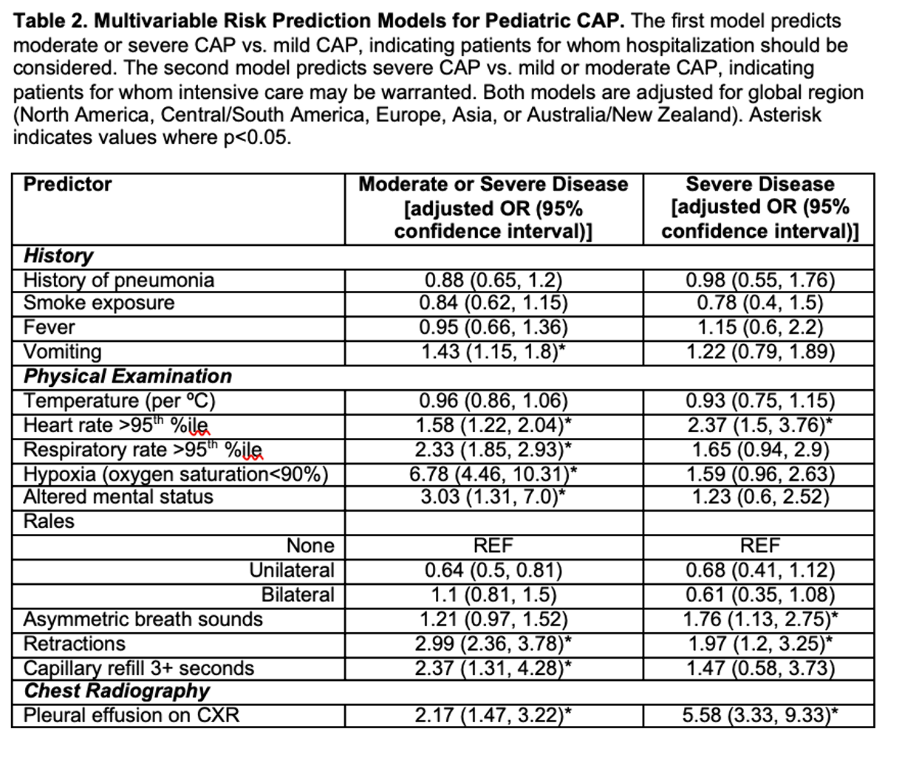Michelle Eckerle (United States of America)
Cincinnati Children's Hospital Medical Center Pediatric Emergency MedicineAuthor Of 1 Presentation
PREDICTING SEVERE PNEUMONIA IN THE EMERGENCY DEPARTMENT: A GLOBAL STUDY OF THE PEDIATRIC EMERGENCY RESEARCH NETWORK (PERN)
Abstract
Backgrounds:
Pneumonia is a frequent and costly cause of emergency department (ED) visits and hospitalizations in children. No validated tools exist to assist with management decisions for children presenting to the ED with community-acquired pneumonia (CAP). Our objective was to develop prediction models to accurately risk stratify children with CAP across a global network of pediatric EDs.
Methods
Prospective study of children 3 months to <14 years old with CAP at 69 EDs in the Pediatric Emergency Research Network. We excluded children with recent hospitalizations, chronic conditions, or critically ill. The primary outcome was an ordinal composite of CAP severity occurring within 7 days: mild (discharged), moderate (hospitalized but not severe), and severe (empyema/effusion requiring drainage, ICU>48 hours, respiratory failure requiring positive-pressure ventilation, septic shock, vasoactive infusions, extracorporeal membrane oxygenation, or death). Multivariable logistic regression was used to develop risk models for moderate/severe disease (vs. mild) and for severe disease (vs. mild or moderate).
Results:
Of 2518 children, 1314 (52.2%) had mild CAP, 1094 (43.4%) moderate, and 110 (4.4%) severe (Table 1). Vomiting, elevated heart rate, elevated respiratory rate, oxygen saturation <90%, altered mental status, retractions, prolonged capillary refill, and pleural effusion were associated with development of moderate/severe CAP (Table 2). Elevated heart rate, asymmetric breath sounds, retractions, and pleural effusion were associated with severe CAP. The AUC for the moderate/severe model was 0.844 (95% CI, 0.828, 0.860) and for the severe model was 0.827 (95% CI, 0.792, 0.862).


Conclusions/Learning Points:
We prospectively derived risk prediction models for pediatric CAP with features easily available at ED presentation in a global cohort of pediatric EDs. Both demonstrated excellent ability to predict moderate/severe disease warranting hospitalization, and severe disease for which intensive care should be considered.
